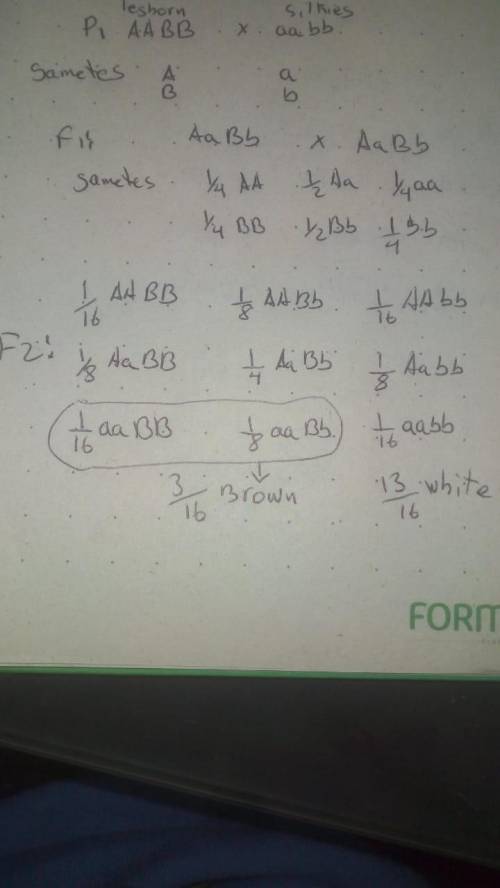
Biology, 04.10.2019 20:20 maddiefoley17
Abreed of chickens called silkies has white feathers due to a recessive allele. leghorns have white feathers due to a dominant allele in a second (different) gene. if true-breeding chickens of both breeds are crossed to each other, what is the expected phenotype of the f1 generation? if members of the f1 generation are mated to each other, what is the expected phenotypic outcome of the f2 generation? assume that the chickens in the parental generation are homozygous for the white allele at one gene and homozygous for the brown allele at the other gene. in subsequent generations, nonwhite birds will be brown.

Answers: 2


Another question on Biology

Biology, 21.06.2019 21:30
Which best explains why there are 64 possible codons in the genetic code and only 20 amino acids that make protiens of living organisms on earth
Answers: 3

Biology, 22.06.2019 01:00
How are mutations continually being generated in a population (what are some of the causes of mutatuions? ) explain
Answers: 1

Biology, 22.06.2019 04:30
In general, characteristics that an organism survive and reproduce become more common over time. what mechanism of evolution causes this?
Answers: 3

Biology, 22.06.2019 09:50
The frequency of alleles in a population that is in hardy weinberg equilibrium? a . changes in each successive generation b. is less important than the frequency genotypes c. shows evidence of the process of natural selection d. remains the same over several generations
Answers: 2
You know the right answer?
Abreed of chickens called silkies has white feathers due to a recessive allele. leghorns have white...
Questions





Mathematics, 17.11.2020 18:00

Mathematics, 17.11.2020 18:00


Biology, 17.11.2020 18:00

English, 17.11.2020 18:00

English, 17.11.2020 18:00


Arts, 17.11.2020 18:00

Mathematics, 17.11.2020 18:00


Arts, 17.11.2020 18:00

Engineering, 17.11.2020 18:00



Biology, 17.11.2020 18:00




